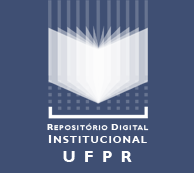ESTIMATING THE DIAMETER OF TREE USING THE NEURO-FUZZY INFERENCE SYSTEM AND ARTIFICIAL NEURAL NETWORKS FROM THE TOTAL HEIGHT VARIABLE
DOI:
https://doi.org/10.5380/rf.v53i4.86492Palavras-chave:
Artificial Intelligence, Dendrometry, Forest Mensuration.Resumo
Studies that seek to identify potential techniques for obtaining diameter values at 1.30 m from the ground from tree height data are necessary, especially when considering the use of airborne Lidar in forest inventory activity. In this sense, this work aimed to evaluate two artificial intelligence tools for this purpose, namely the neuro-fuzzy inference systems and the artificial neural networks. Four models were tested to obtain estimates for the diameter variable, which were prepared by combining the independent variables useful area per plant, age and height. After processing, the statistics of bias, square root of the mean squared error in percentage, correlation and mean percentage error were calculated, in addition to the preparation of scatter plots and histogram of residues. It was observed that, for the estimation of the diameter in both techniques, the use of the model with all independent variables obtained the best values for the analysis statistics. It can be concluded that both tools can be used to estimate the diameter, with the neuro-fuzzy inference system being more suitable for its processing speed and small variability between the values obtained in different training sessions for the same database.
Downloads
Publicado
Como Citar
Edição
Seção
Licença
Direitos Autorais para artigos publicados nesta revista são do autor, com direitos de primeira publicação para a revista. Em virtude da aparecerem nesta revista de acesso público, os artigos são de uso gratuito, com atribuições próprias, em aplicações educacionais e não-comerciais.A revista, seguindo a recomendações do movimento Acesso Aberto, proporciona acesso publico a todo o seu conteudo, seguindo o principio de que tornar gratuito o acesso a pesquisas gera um maior intrcambio global de conhecimento.
Conteúdos do periódico licenciados sob uma Licença Creative Commons 4.0 Internacional (CC BY 4.0)




